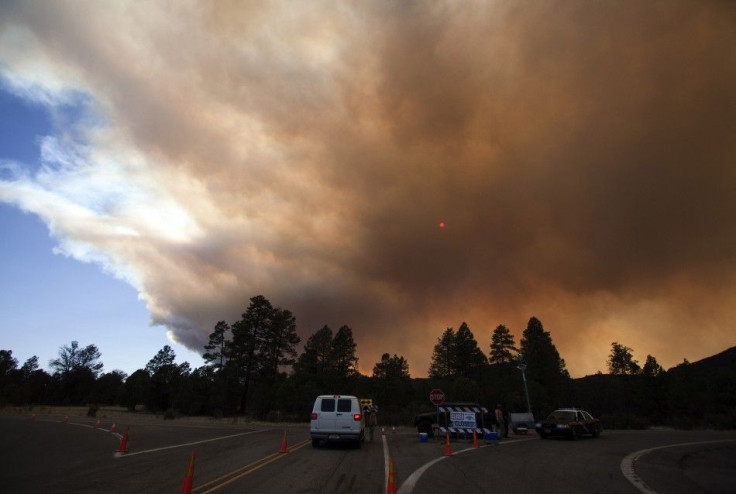Two suspects surface in Wallow Fire blaze

Two people of interest are being questioned over the Arizona wildfires, according to sources, for what has become the largest wildfire in the state's history.
Officials told ABC that the 469,000-acre Wallow Fire blaze was caused by a campfire, and they are now centering their investigation on two individuals. The identities of the persons of interest have not been released.
The Wallow Fire, which on Tuesday surpassed the Rodeo-Chediski Fire as the largest in Arizona's history, forced thousands from their homes and has kept the eastern portion of our state blanketed with thick smoke.
The wildfire that has been continuing its disaster through the pine forests of eastern Arizona for more than two weeks has surpassed the 468,000 acres destroyed in the 2002 Rodeo-Chediski Fire in eastern Arizona.
That makes the Wallow Fire the largest on record in Arizona.
However, in terms of property losses, the Rodeo-Chidiski was far worse, destroying about 400 homes, said U.S. Forest Service spokeswoman Suzanne Flory.
Dozens of homes have been burned and as many as 10,000 people have been displaced by the Wallow Fire since its eruption on May 29 due to a suspected unattended campfire in the White Mountains region.
Due to wind-whipped blaze, most parts of the the Apache Sitgreaves National Forest, about 150 miles east of Phoenix, have got burned, said a Reuters report.
Although evacuation orders were lifted on Sunday for 7,000 to 8,000 residents forced to flee last week from two towns near the border with New Mexico, Springerville and Eagar, authorities have warned returning families that lingering smoke and soot in the air may cause health risks.
© Copyright IBTimes 2024. All rights reserved.











